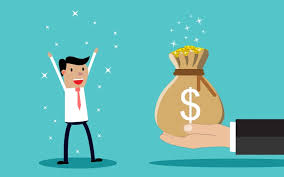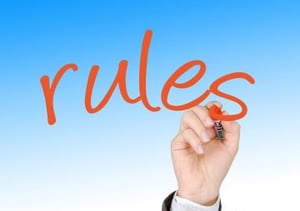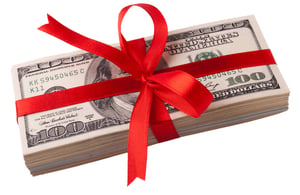Your bar manager plays a crucial role in the success of your business, possibly even more than you may realize. Take it from us – we’ve seen time and again how a bar manager can impact the success of our clients.
 Bar-i provides similar services for all of our clients, and we’ve found that the varying levels of results achieved by these different bars is strongly related to the quality and motivation level of the managers implementing our recommendations. This means that increasing the motivation and performance of your bar manager will most likely help you increase your profits over time.
Bar-i provides similar services for all of our clients, and we’ve found that the varying levels of results achieved by these different bars is strongly related to the quality and motivation level of the managers implementing our recommendations. This means that increasing the motivation and performance of your bar manager will most likely help you increase your profits over time.
Ultimately, most people are motivated by self-interest, and we’ve found that creating incentives has been a great way for many of our clients to improve the performance of their bar managers. Often, small incentives can produce big changes in behavior. Providing some relatively modest financial incentives will often make managers more motivated to take the actions necessary to maximize your profits.
Why Should I Provide My Bar Manager with Performance Incentives?
Over the last year, the average performance of Bar-i clients has been 93% (in other words, 93% of the products poured were actually rung into your POS system). Our highest performers experienced a 98% accountability score. Raising your bar’s performance from 93% to 98% equates to approximately a 1% reduction in your liquor cost. This allows you to capture extra money simply by doing the same things you are currently doing more efficiently and effectively.
Most clients are performing in the low 80s when they first start working with us, so a 93% accountability score represents a significant improvement. However, this level of performance is still much lower than our clients achieving the best results, and there’s no reason your bar can’t function at a similarly high level as many of our other top performing clients. Doing so will help your bottom line immensely over time.
 You may provide the counter argument that you shouldn’t have to pay your manager extra money to do their job. While this is a valid argument, it doesn’t change the fact that providing this modest financial incentive will help you make more money. Do you really want to sacrifice profits in the name of principle? Incentivization works and if providing these incentives means you’ll make more money, it will be worthwhile to do so.
You may provide the counter argument that you shouldn’t have to pay your manager extra money to do their job. While this is a valid argument, it doesn’t change the fact that providing this modest financial incentive will help you make more money. Do you really want to sacrifice profits in the name of principle? Incentivization works and if providing these incentives means you’ll make more money, it will be worthwhile to do so.
Plus, there’s nothing wrong with passing a long a percentage of these increased profits to your bar manager who is working hard to make sure you are earning this extra money. Ultimately, a happy bar manager will pay huge dividends in every aspect of your business, and this is an easy way to show your manager that you value their contributions to your business.
Steps for Creating an Incentive Program for Your Bar Manager
Creating an effective incentive program is quite easy:
Step 1: Determine the value of 5% higher performance.
Let’s use an example involving a bar that does approximately $40,000 in monthly sales. This breaks down to roughly $10,000 in sales per week. As we mentioned earlier, a 5% improvement in performance equates to a 1% reduction in liquor cost. This will result in a $100 reduction in the money you spend each week purchasing the products you are serving (1% of $10,000 = $100).
As we discussed in a recent blog post about the real cost of inventory shrinkage, doubling the value of your wholesale loss provides a conservative estimate regarding the true impact this shrinkage has on your profitability. Therefore, a bar doing $40,000 in monthly sales can expect to achieve an extra $200/week ($800/month) in profits by improving their performance levels from 93% to 98%.
Keep in mind that this figure will scale up or down depending on your bar’s sales volume. If you do an extremely high sales volume, your increased profits can be significantly higher than this $800/month estimate.
Step 2: Choose the budget.
We recommend spending approximately 10% of the additional profits you capture as an incentive to your bar manager. In our current example, 10% of a $200 weekly profit gain would provide your bar manager with an additional $20 a week for this job well done.
Step 3: Set the rules of the game.
 There are two different ways you can structure your incentive plan:
There are two different ways you can structure your incentive plan:
- Change the monetary incentive for each percentage point that your bar’s performance exceeds a 95% threshold. In this situation, you may offer:
- $20 for 99% performance
- $16 for 98% performance
- $12 for 97% performance
- $8 for 96% performance
- $4 for 95% performance
- Simplify this formula by only offering 3 performance tiers:
- $20 for 99% performance
- $15 for 97% performance
- $10 for 95% performance
Either of these approaches will work fine. The important point is that you need to scale your incentive so that there are increased benefits for getting significantly better results. You want to avoid a situation where the full incentive is reached when performance hits 95%. If this occurs, your bar manager has no real incentive to strive for 97-99% performance.
Under both of these incentive plans, your manager can boost earnings by $80 a month if your bar’s performance metrics reach 99%. Over a full year, this will add $1040 to your bar manager’s salary. For most people, adding $1,000+ to their salary represents a significant amount of money and should provide a strong incentive for them to put in the effort necessary to achieve these performance results.
A Few Items to Consider when Creating Your Incentive Plan
In order to ensure your incentive plan achieves the desired improvement in your manager’s performance, you’ll want to keep the following points in mind:
- Performance goals should be evaluated every inventory period – It’s most effective to evaluate these performance goals each inventory period, regardless of whether you take inventory on a weekly or bi-weekly basis.
 Adjust incentive numbers to fit your business model – The higher your sales volume, the larger the financial upside for your business when you reach 98-99% performance levels. This means you should provide a larger incentive budget for reaching these performance levels.
Adjust incentive numbers to fit your business model – The higher your sales volume, the larger the financial upside for your business when you reach 98-99% performance levels. This means you should provide a larger incentive budget for reaching these performance levels.
You don’t necessarily need to scale to exactly 10% of your increased revenue if you’re doing a very large sales volume. The point is to make sure you’re choosing an incentive value that you feel comfortable spending, that adequately reflects the improvement in revenue you are achieving, and that will effectively motivate your manager to hit these higher performance levels.- You need an inventory system that provides accountability data – You need a detailed measure of performance in order to implement this incentive program. Accountability is a great metric to use because it is independent of other factors such as weekly sales, product mix, discounts and price changes. All of these factors will impact your liquor cost, which means that liquor cost is a poor incentive metric to use. Accountability provides a much better metric to base your incentives on since it is actually measuring the performance of your staff independent of these other factors.
- Creating this plan requires more up-front work – You will need to set up a detailed system and decide what the incentive structure is. This requires a little more work at the front end of this process. However, once you put in this time up-front, it should be easy to administer your incentive program moving forward.
- Consistency is essential – In order for your incentive system to be effective, it must be applied consistently from inventory period to inventory period. This will ensure your manager stays motivated to put in the effort necessary to maintain these high performance levels.
- Determine how spills and comps are handled – It’s important to reach an agreement with your bar manager on how items such as spills and comps will be handled as part of the incentive program. This will ensure your manager doesn’t use these items to game the system and improve their bonus.
For example, we’ve found that it isn’t a good idea to ring draft beer waste into your POS system. If you don’t want these items rung in, you’ll need to set clear expectations for how you’d prefer that your manager handle these items.
Providing Your Bar Manager with an Incentive is Worthwhile
We’re confident that creating this incentive plan is well worth the effort. In the example we used above (a bar doing $40,000 in monthly sales), you’ll be making an extra $180 per week after you pay your bar manager the $20 incentive for a job well done. Over the course of a year, this will help you earn an extra $9,000.
The restaurant industry has an average profitability of around 3-5%. With such a low profitability rate, you need to do everything in your power to optimize your revenue. If you can make close to an extra $10,000 per year by simply optimizing your manager’s performance, it is certainly worth the effort. This provides you with an easy way to make more money while simultaneously taking care of one of your most important employees.
If you’d like to find out how Bar-i can help you streamline your processes and maximize your profits, please contact us today to schedule your free consultation. We serve bars and restaurants nationwide from our offices in Denver, Colorado.


-1.png)